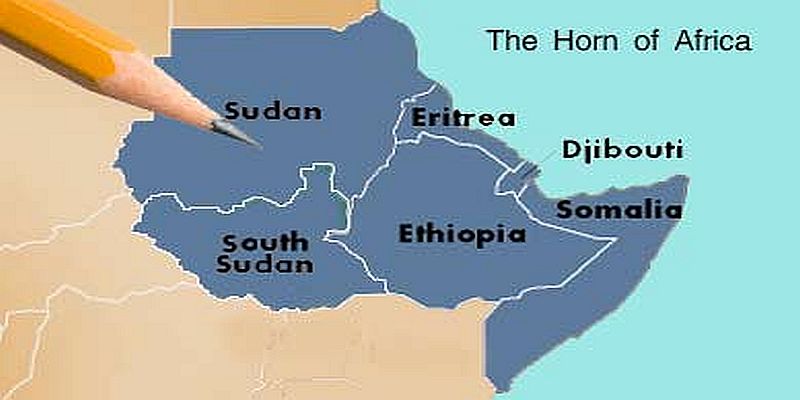Somalia’s Options in the New Power Dynamics in the Horn

In January 2024, Ethiopia nearly broke Somalia’s sovereignty without firing a shot. A single memorandum of understanding with Somaliland (region in Somalia) — now paused — exposed Addis Ababa’s willingness to redraw the Horn of Africa’s political map and Mogadishu’s inability to stop it. This was not an isolated provocation, but part of Ethiopia’s long, calculated rise to regional hegemony.
Ethiopia’s hegemonic instinct runs deep, shaped by centuries of conflict with Muslim sultanates and European-backed Christian alliances. The 16th-century wars with the Adal Sultanate, centered in today’s Somalia, militarized the divide between highlands and lowlands. Though Adal was defeated, the Ethiopian state emerged with a lasting perception of threat from the Muslim lowlands — a perception that still informs its strategic thinking.
In the 19th century, Menelik II expanded Ethiopia’s reach during the Scramble for Africa, annexing Somali territories such as Ogaden while resisting European colonization. This duality — defending Ethiopia’s sovereignty while denying it to others — became a hallmark of modern Ethiopian statecraft. Haile Selassie carried this paradox into the 20th century, positioning himself as a champion of African independence while suppressing Somali nationalist claims and absorbing Eritrea.
During the Cold War, Ethiopia became the proxy of choice — first for the United States, then for the Soviet Union. The 1977–78 Ogaden War marked a decisive shift: the Soviets and Cubans abandoned Somalia to back Ethiopia, cementing Addis Ababa’s role as a preferred partner for great powers willing to overlook its authoritarianism in exchange for regional stability on their terms.
After the Cold War, Ethiopia adapted quickly to new realities. Post-9/11, it recast itself as an indispensable counterterrorism ally for Washington. The 2006 intervention in Somalia, presented as an anti-terror operation, was in reality a calculated move to prevent the emergence of a united Somali administration. Ethiopia positioned itself not as an occupier but as a guarantor of Somalia’s fractured status quo — a sophisticated form of “informal empire” that uses influence, proxies, and leverage rather than formal annexation.
Today, Ethiopia’s advantage is magnified by the weakness of its neighbors: Sudan is consumed by civil war; Djibouti’s strategic importance is offset by its small size and dependence on Ethiopia; Eritrea faces renewed tension with Addis Ababa over Red Sea access. But Somalia is the most exposed — fractured internally, diplomatically incoherent, and with unresolved sovereignty questions.
The Somaliland issue remains Ethiopia’s most exploited fault line. The paused 2024 MOU with Hargeisa signaled Ethiopia’s confidence that Mogadishu would be unable to mount a unified, credible response. Somalia’s federal model allows states to act independently on external relations, while political elites remain consumed by clan rivalries and short-term calculations. Without a national doctrine to define red lines, partnerships, and strategic goals, Somalia leaves the task of defining its role to external actors.
The Grand Ethiopian Renaissance Dam (GERD) illustrates Ethiopia’s new regional assertiveness. Addis Ababa filled the dam unilaterally, defying Egypt and Sudan — and discovered that opposition amounted to rhetoric, not resistance. This success has emboldened Ethiopian ambitions, including projected naval access to the Red Sea.
Beyond Mogadishu and Hargeisa, the more dangerous flashpoint may lie in Asmara. Ethiopia’s loss of coastline after Eritrea’s independence in 1993 still lingers as a national grievance, and the likelihood of renewed confrontation over maritime access is increasing. For Eritrea, Ethiopia’s hegemonic trajectory threatens both sovereignty and control over vital Red Sea ports. For Egypt, the challenge is even broader: after losing the GERD battle, Cairo now faces the prospect of Ethiopian naval power in a waterway critical to its security and economic lifelines.
These dynamics are not playing out in isolation. Gulf states, the African Union, and major powers like the U.S. and China all have a stake in the region’s sea lanes, energy routes, and political alignments. Ethiopia’s ability to maneuver among these actors — playing one against another — is central to its hegemonic model. The Horn is no longer a peripheral theater; it is a frontline in a broader strategic contest connecting Africa, the Middle East, and global trade.
Somalia’s internal fragmentation is not just dysfunction; it is strategic decay. The absence of a unified response to existential threats normalizes foreign interference. Weak institutions, unresolved federal-state tensions, and the Somaliland question collectively enable Ethiopia’s approach. Somalia complains; Ethiopia calculates. The danger is not only that Somalia loses ground, but that this loss becomes an accepted regional norm.
What Somalia Must Do
• Make unity a strategy: Treat national unity not as nostalgia but as a survival imperative. Engage all regions, including Somaliland, through constitutional clarity and political generosity.
• Develop a national doctrine: Define non-negotiable red lines, set strategic priorities, and align partnerships with long-term interests. Speak with one voice internationally.
• Practice strategic patience on Somaliland: Avoid reactive politics. Use diplomacy to delegitimize external deals like the Ethiopia–Somaliland MOU. Engage Somaliland leaders in sustained dialogue with integration backed by constitutional guarantees.
• Rebalance regional diplomacy: Abandon permanent alignment with a single power. Build interest-based relationships with African, Arab, and global partners while maintaining independence.
• Invest in institutional backbone: Professionalize the foreign service and national security structures. Establish a Constitutional Court to anchor the rule of law. • Revive national morale: Remind citizens that the republic was born from unity and sacrifice. The fight is not just against terrorism or interference — it is for the soul of the Somali state.
Ethiopia’s hegemony is real but not inevitable. Somalia’s survival will be determined not by matching Ethiopia’s size or resources, but by achieving coherence, purpose, and discipline. The Horn of Africa is moving quickly into a new strategic order. Somalia must decide whether to move with it — or be moved by others.
By Hussein Sheikh-Ali
Former National Security Advisor to the 9th and 10th Presidents of Somalia.
